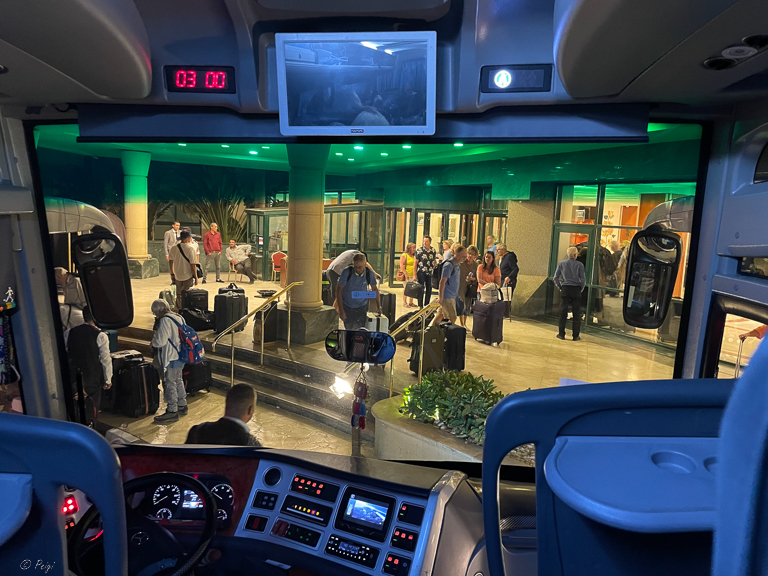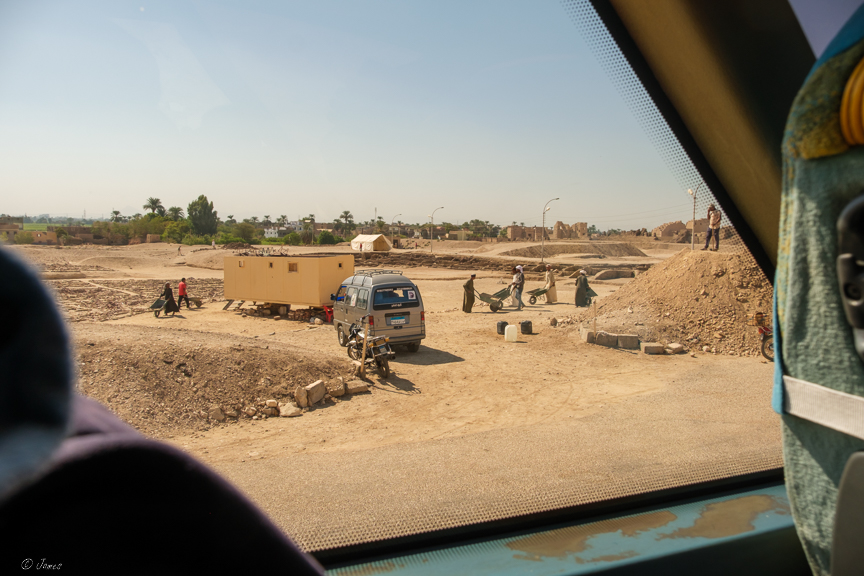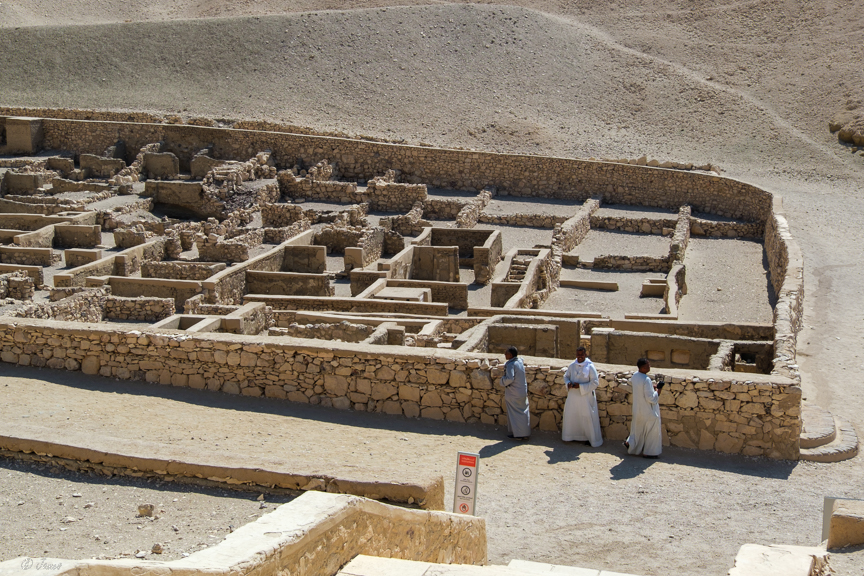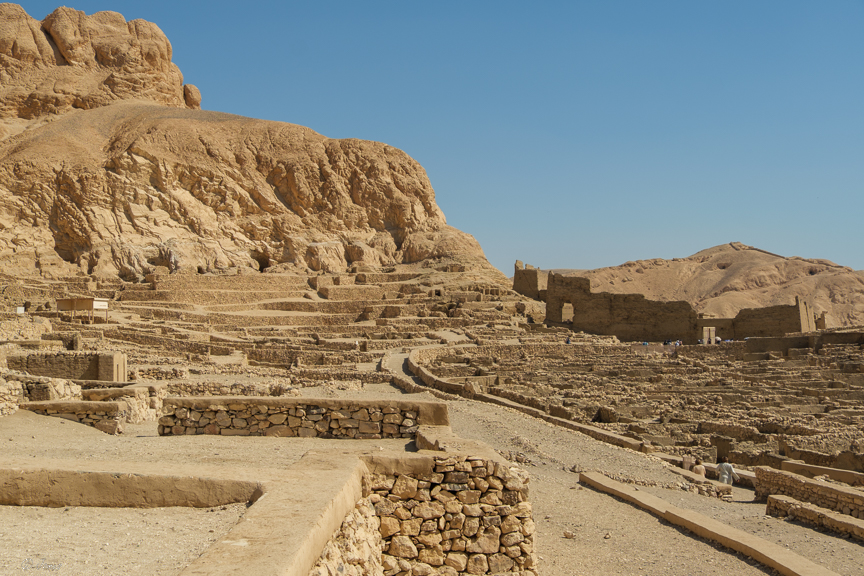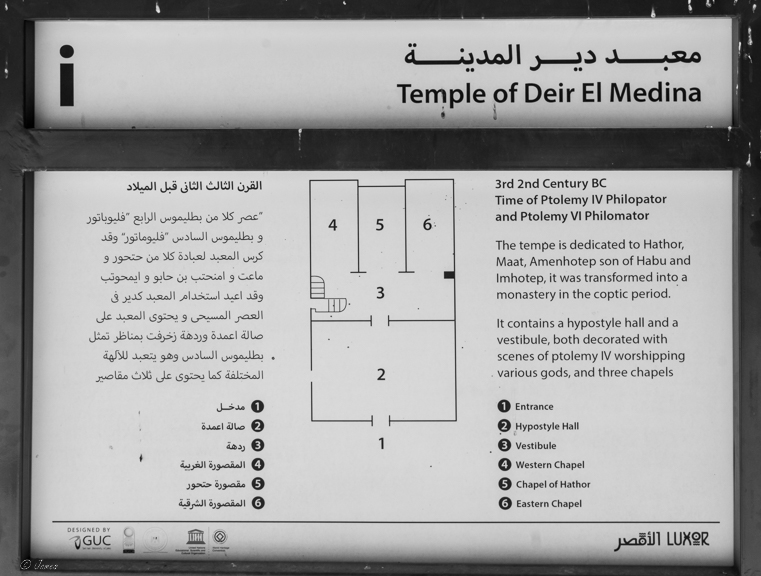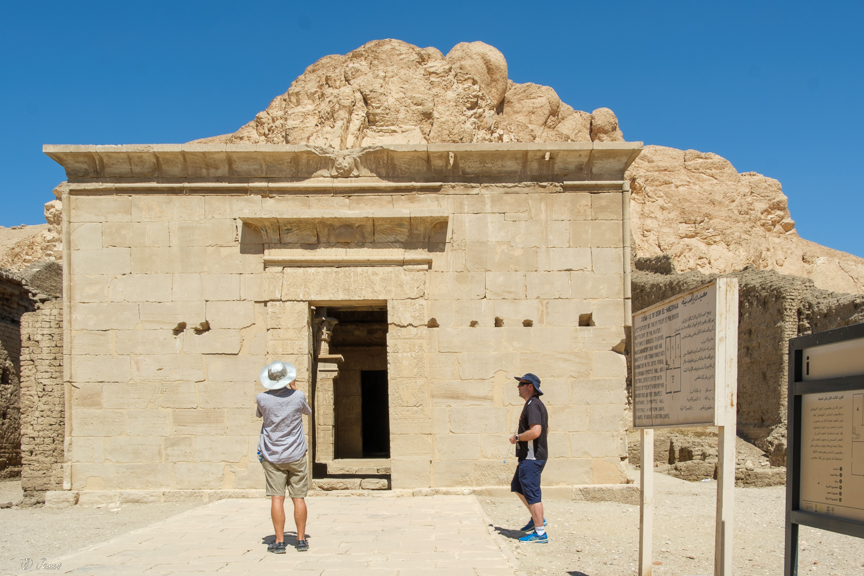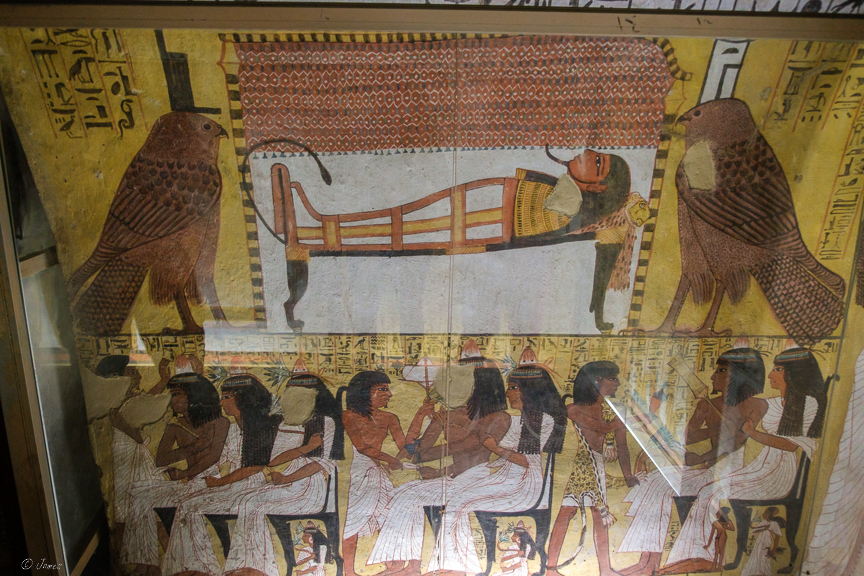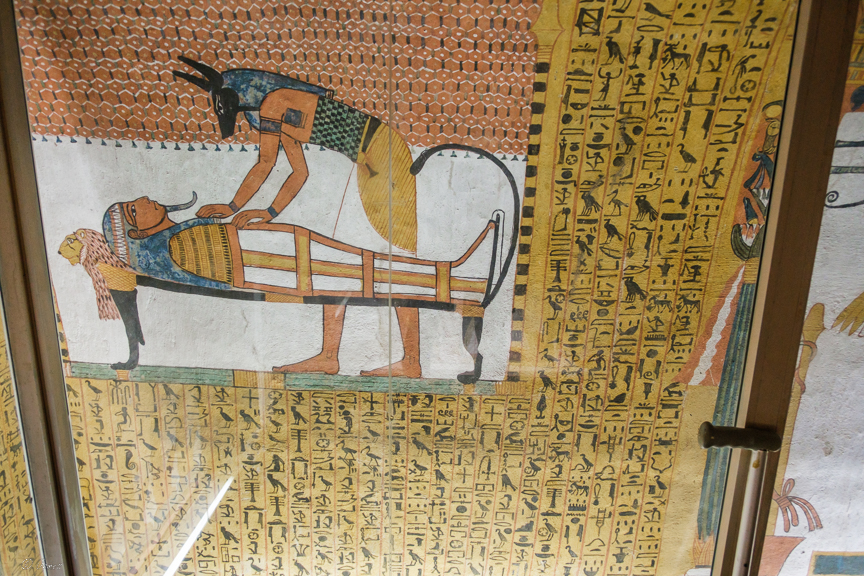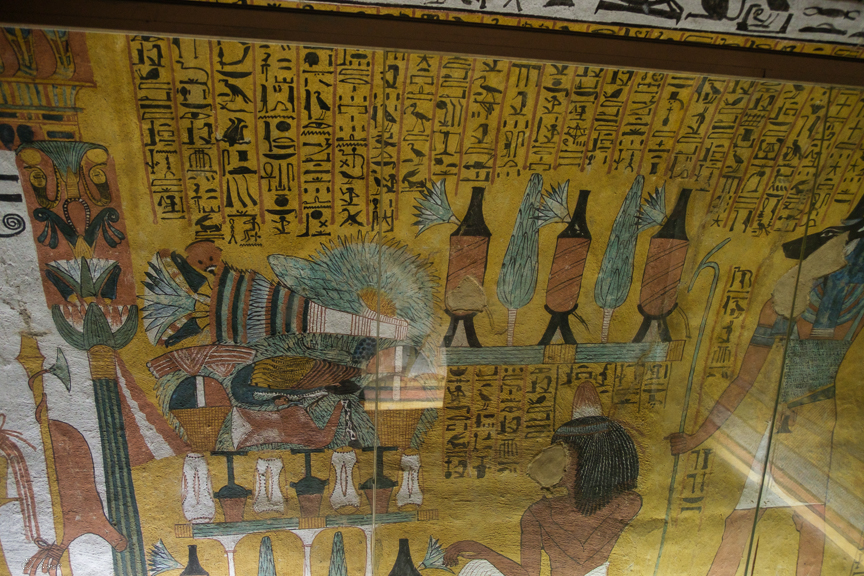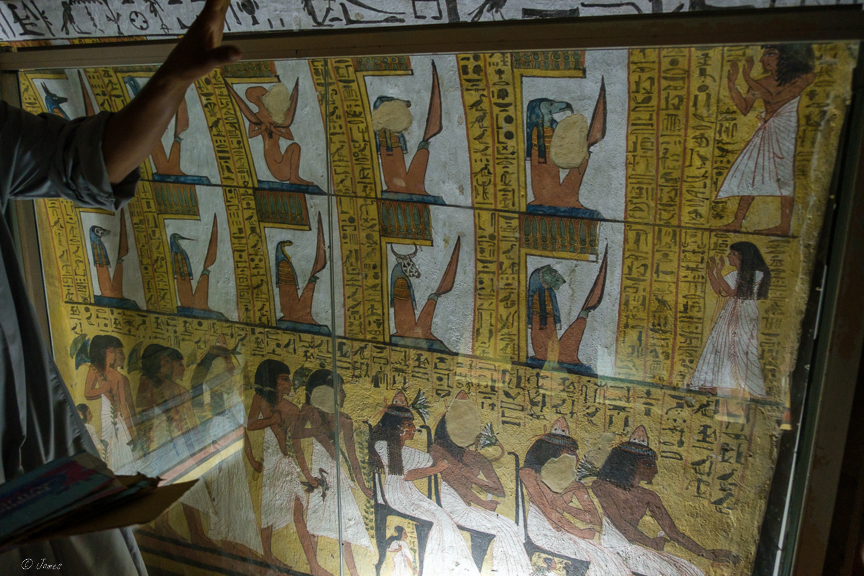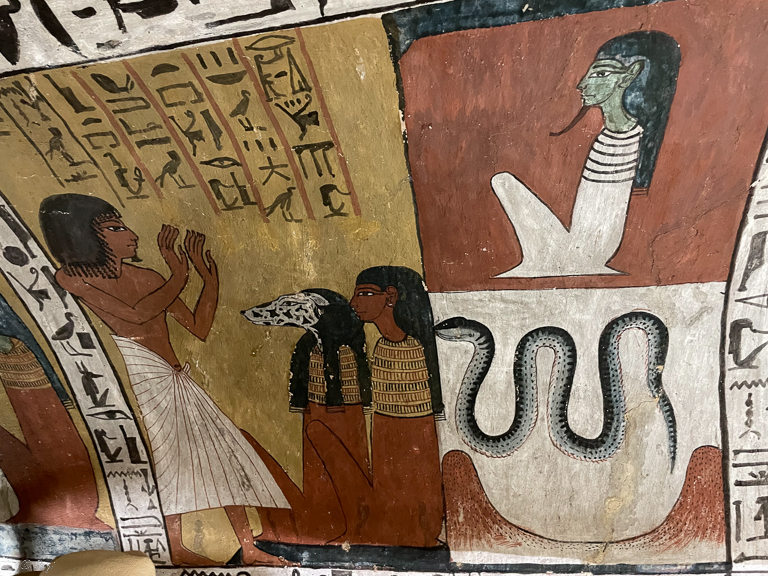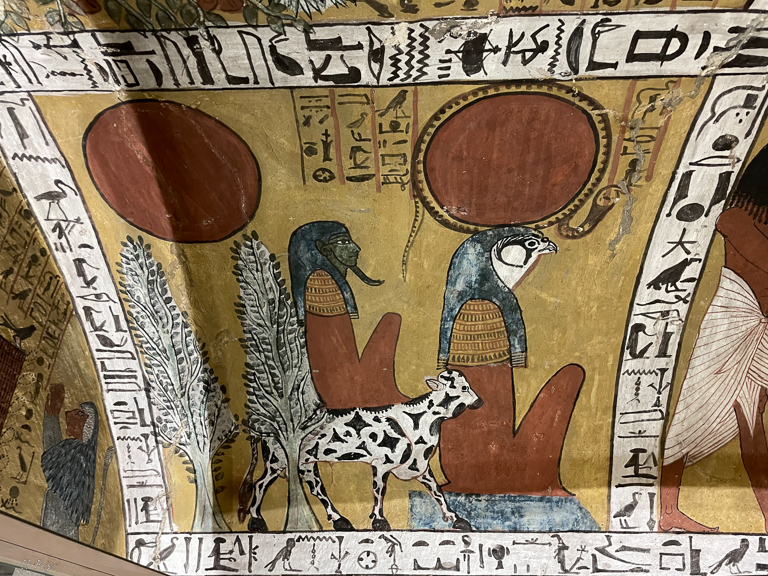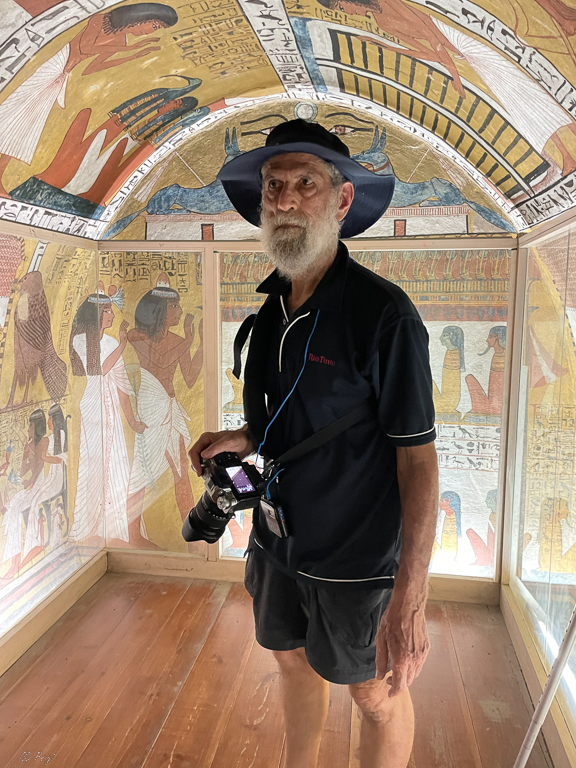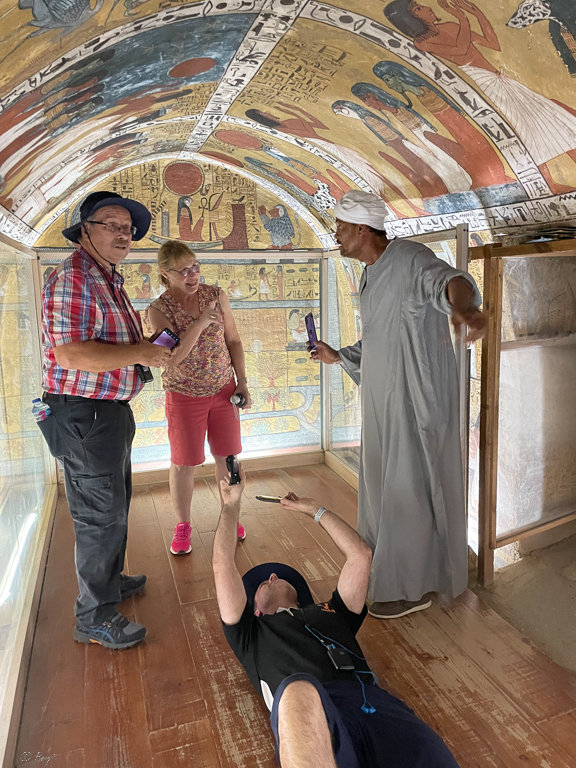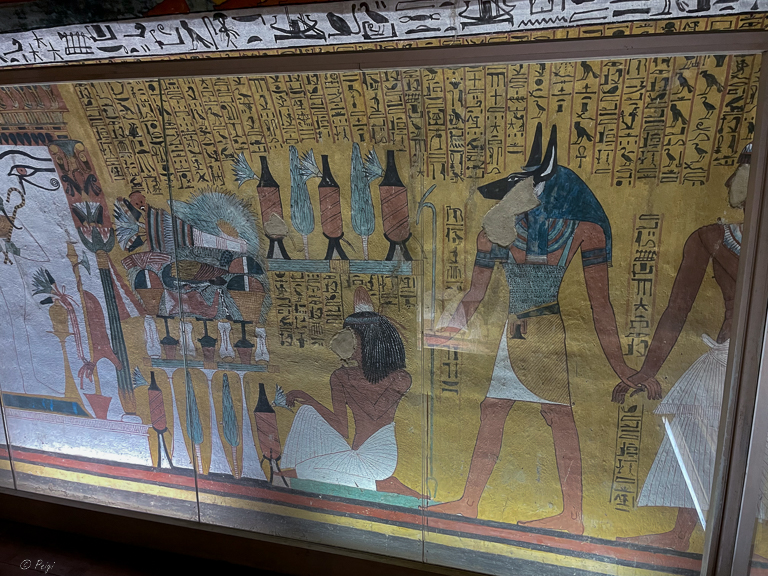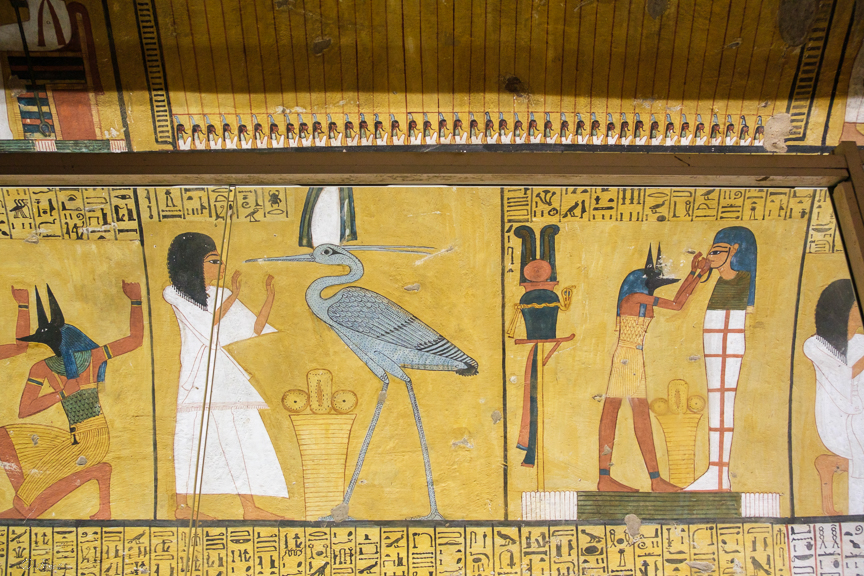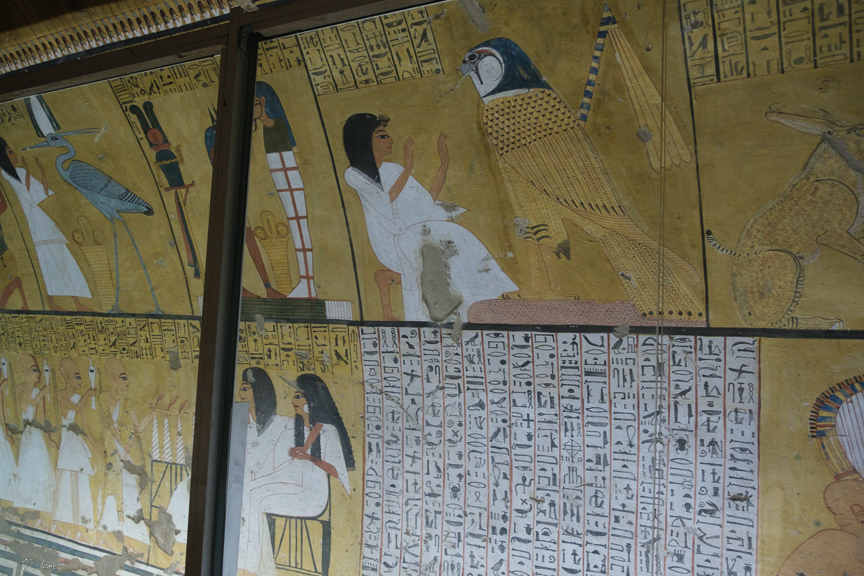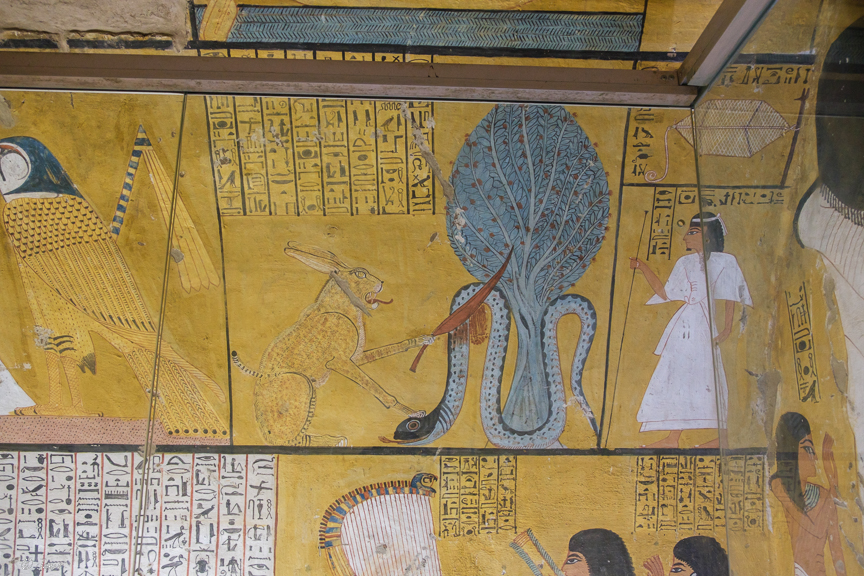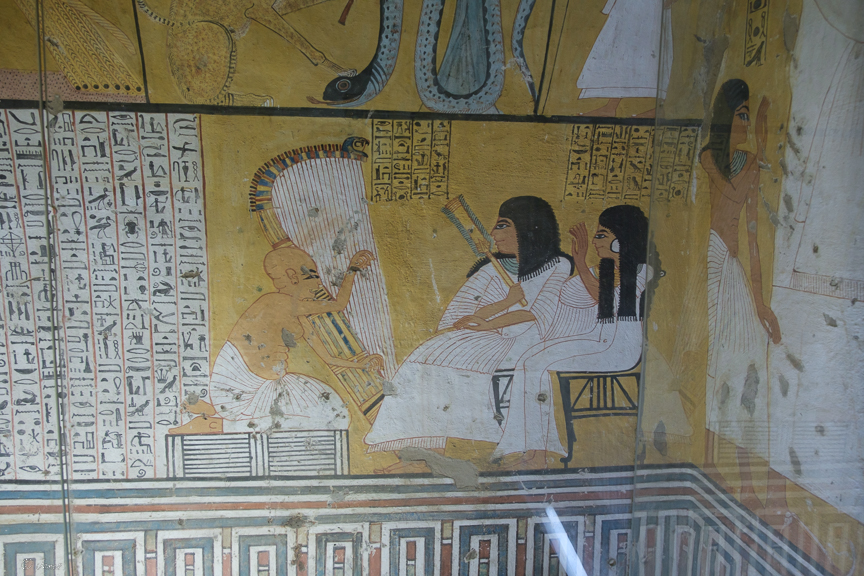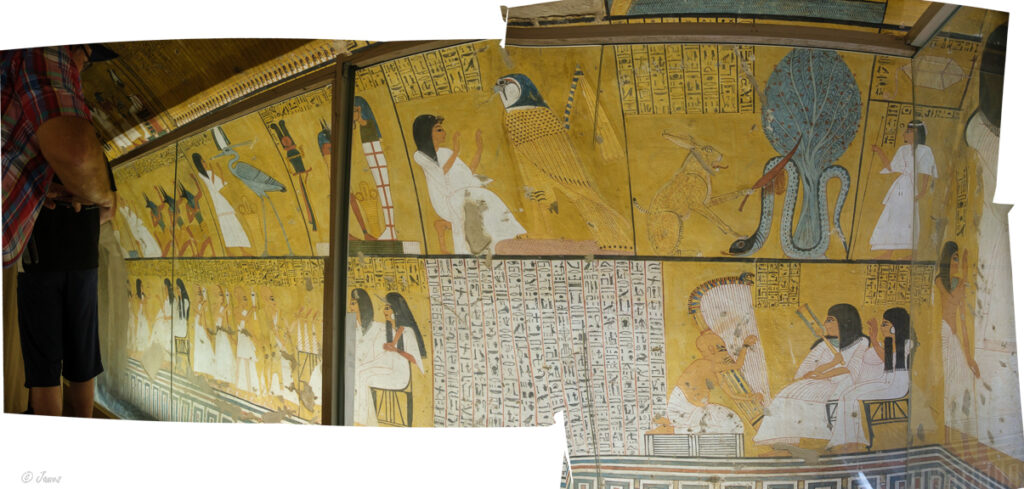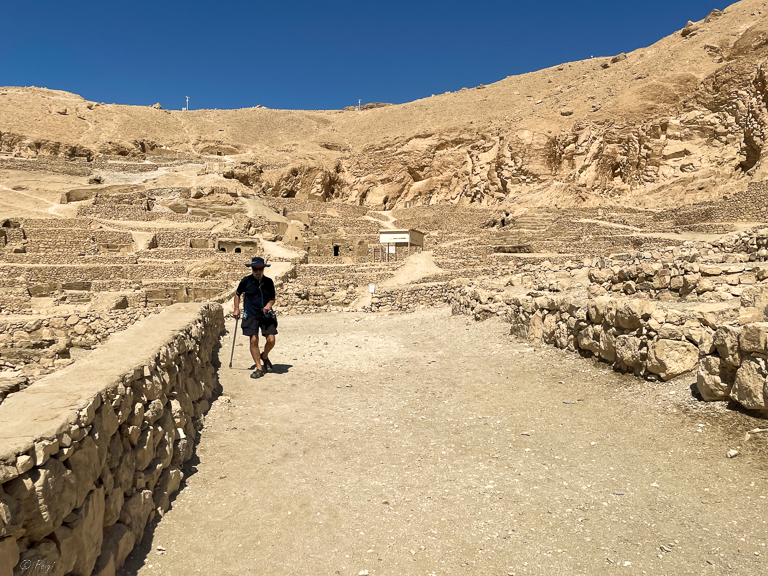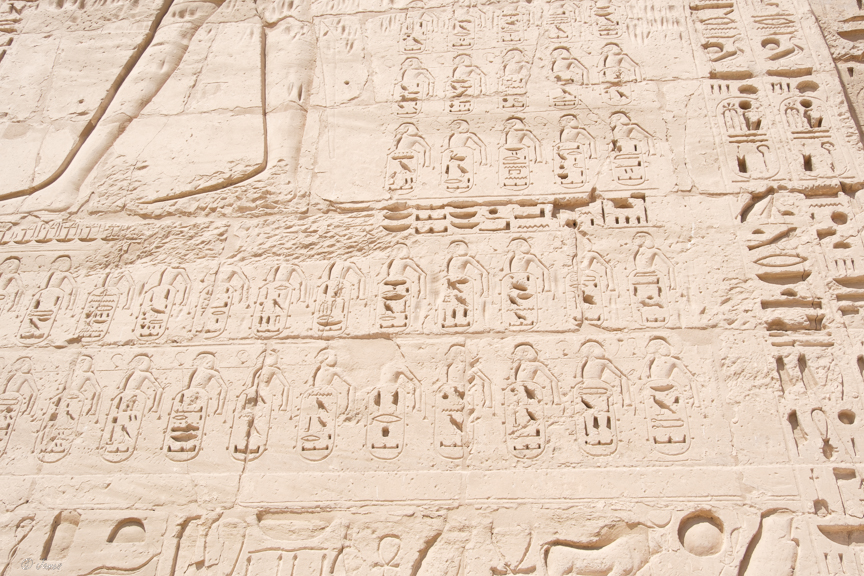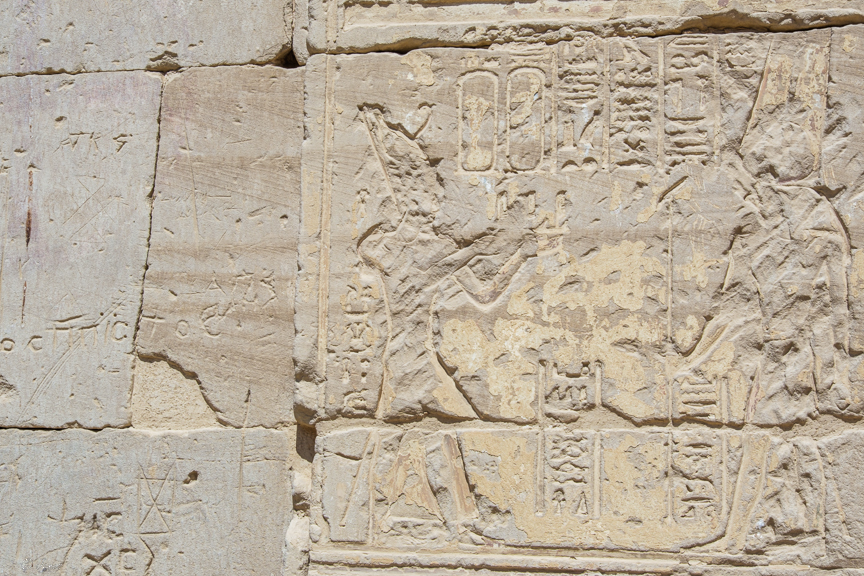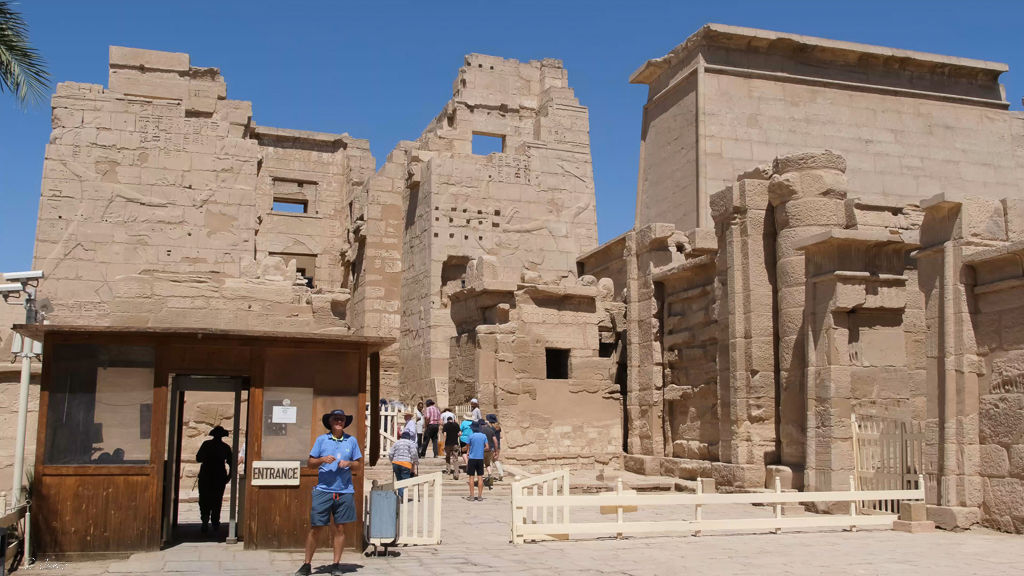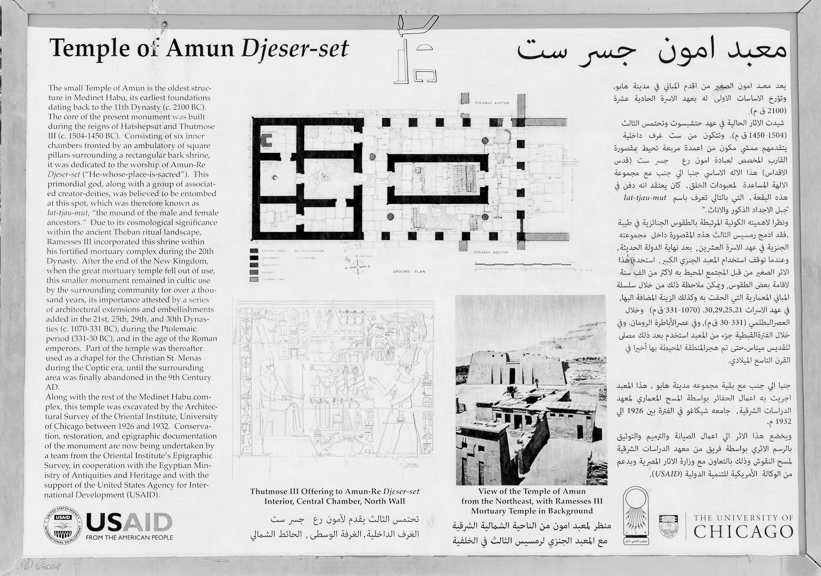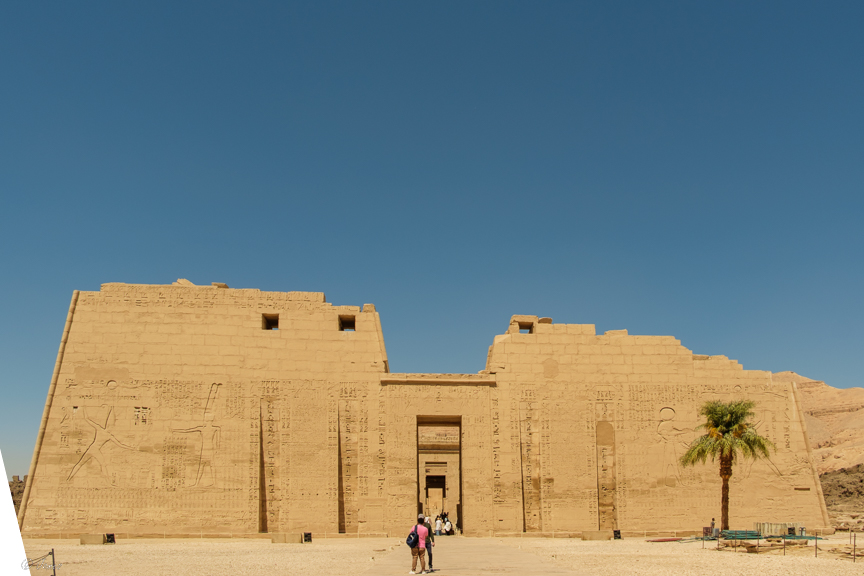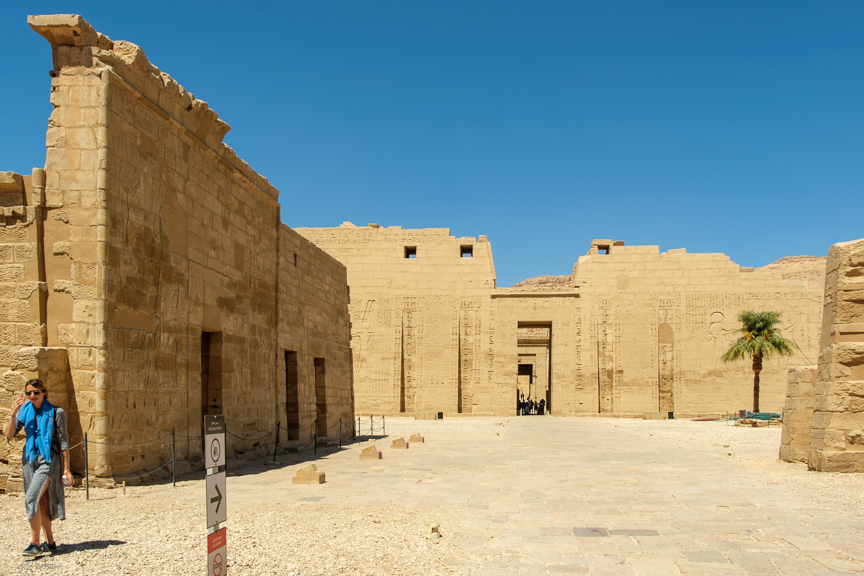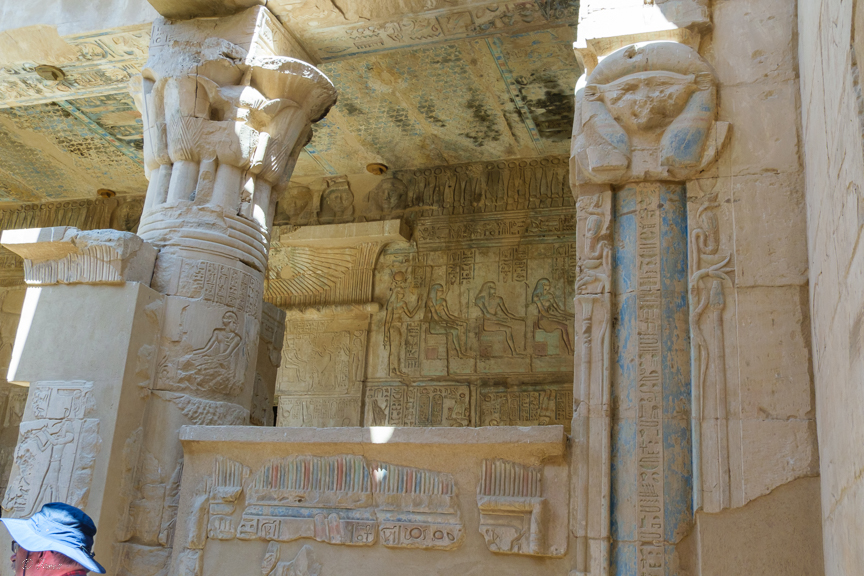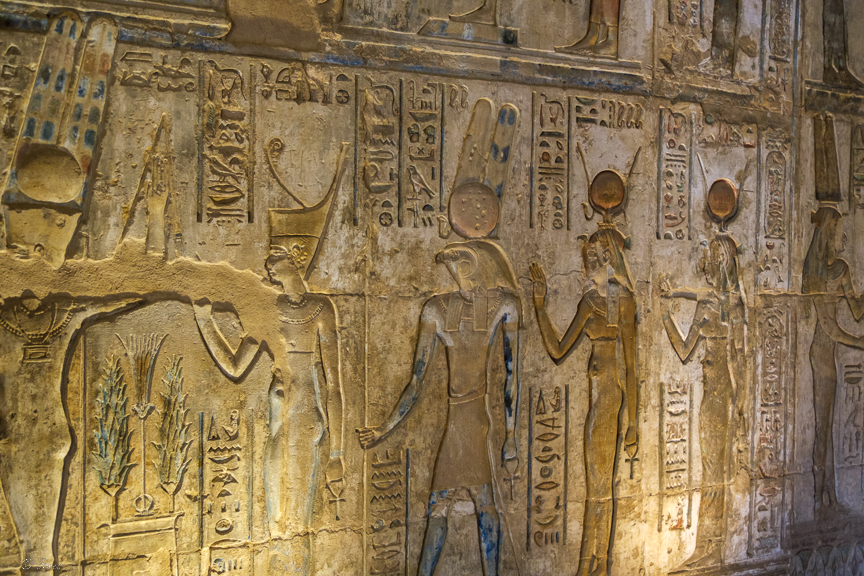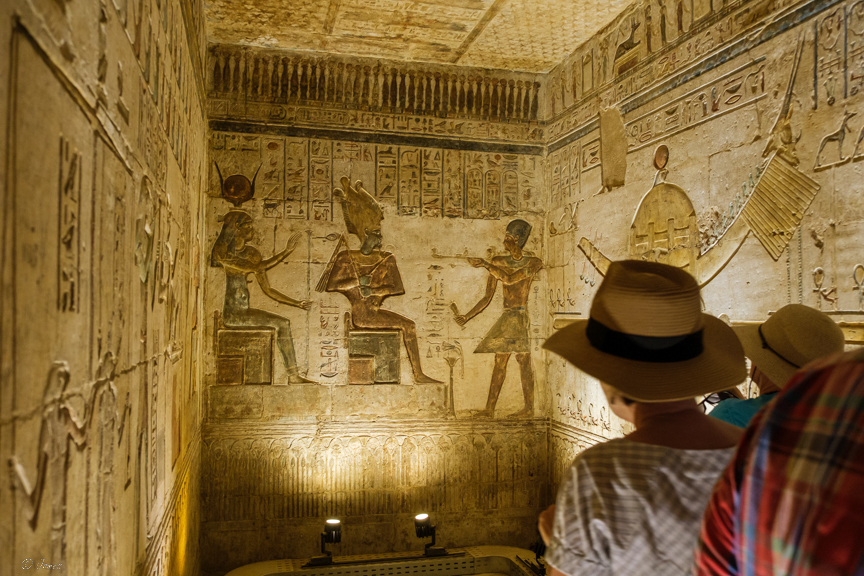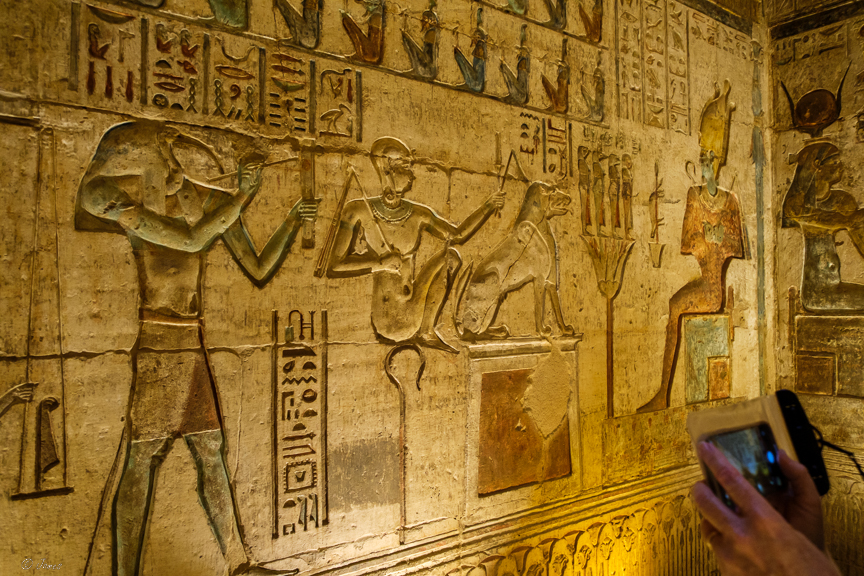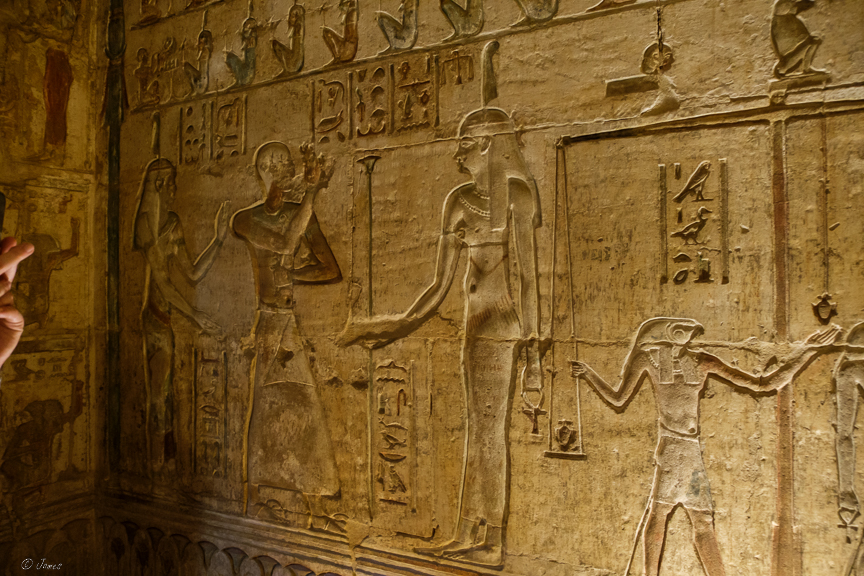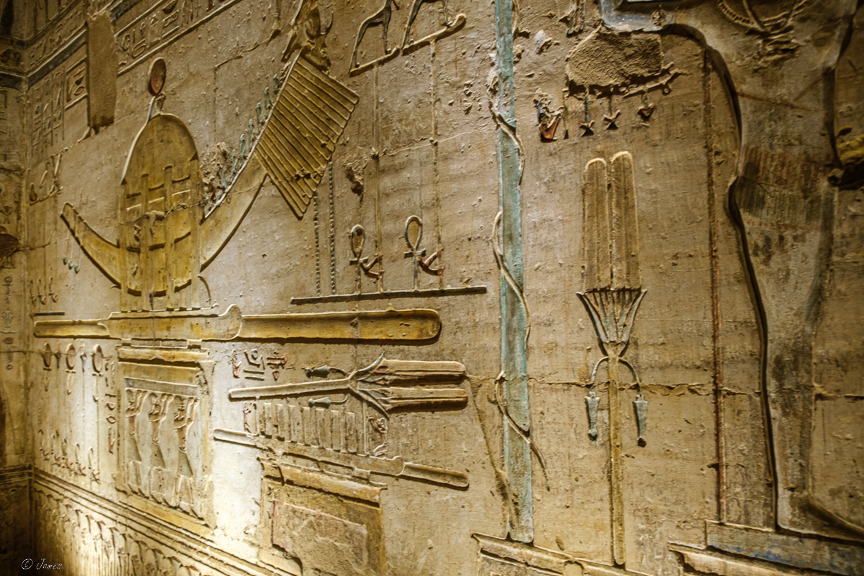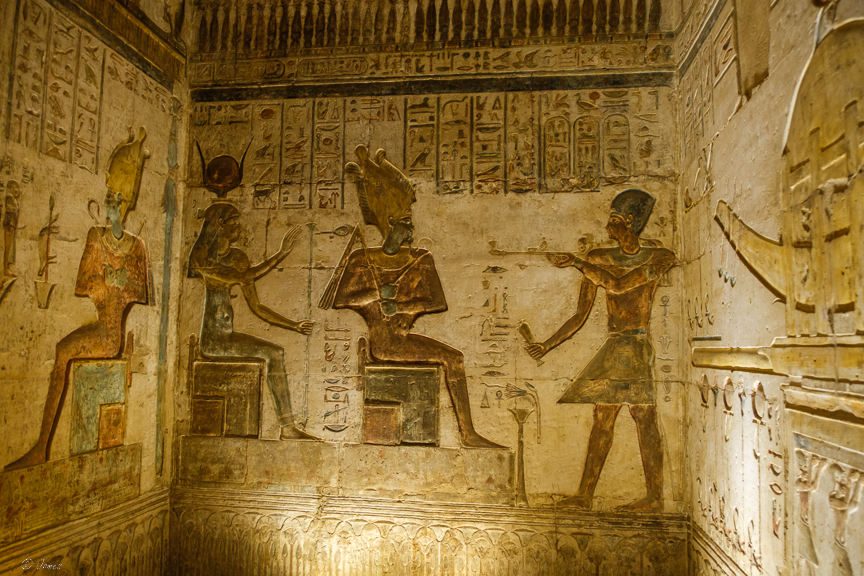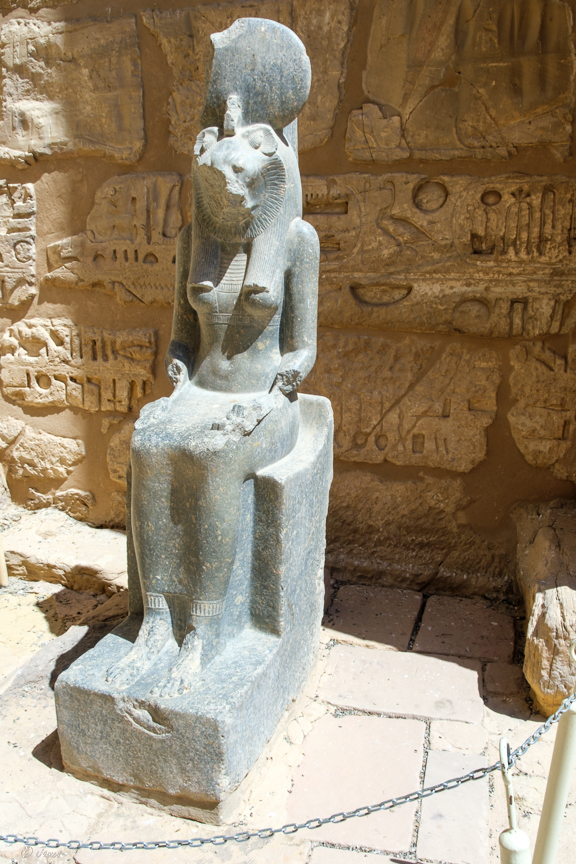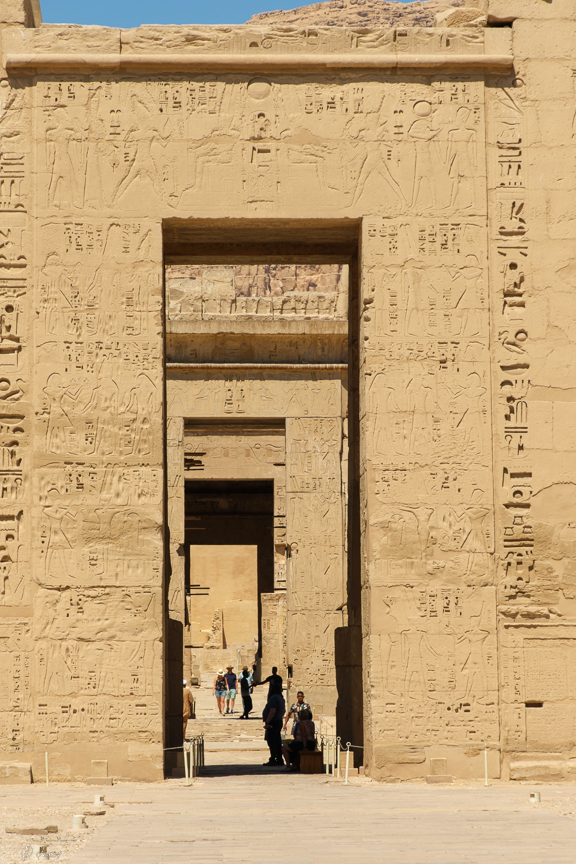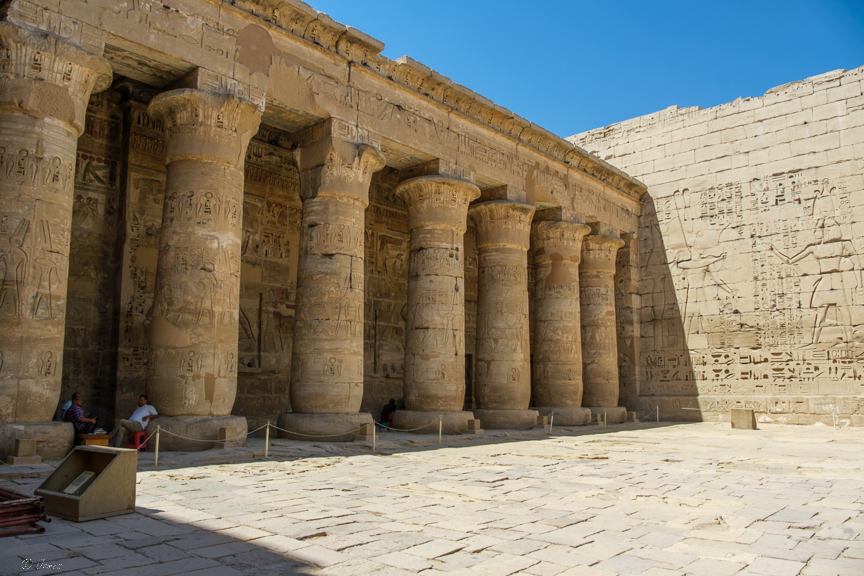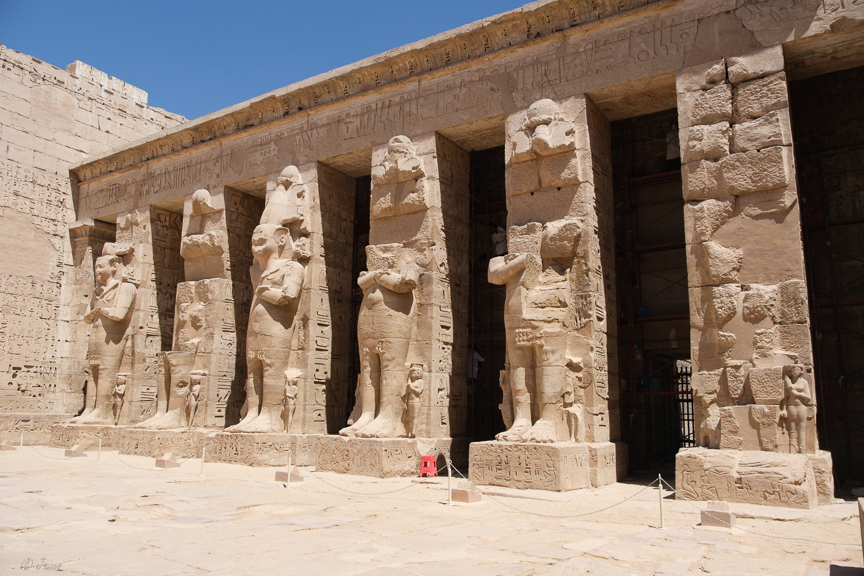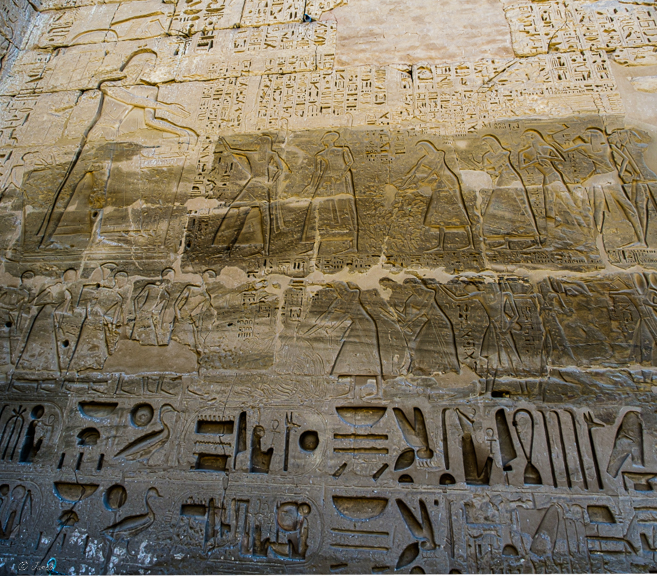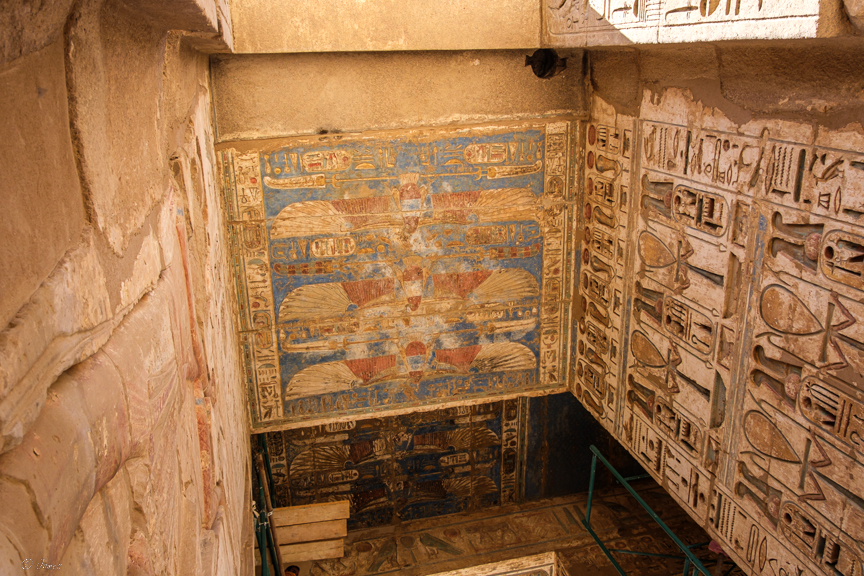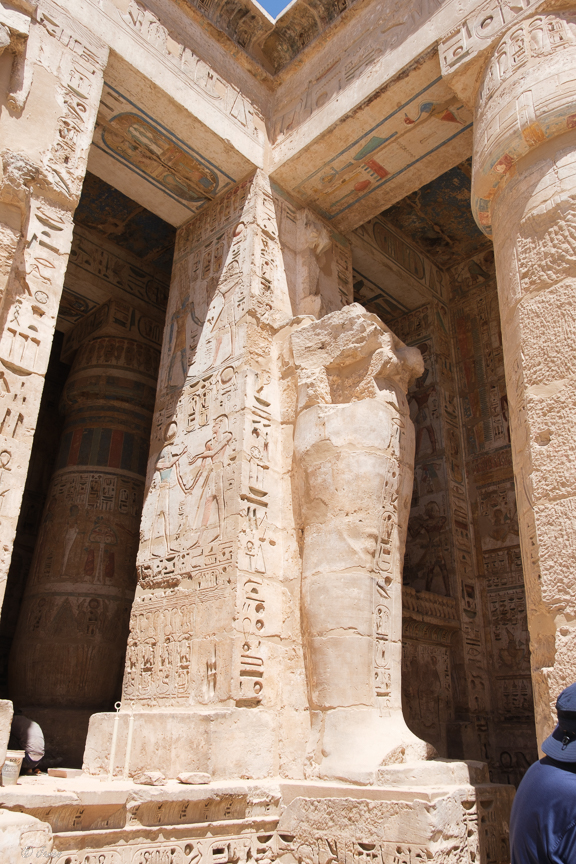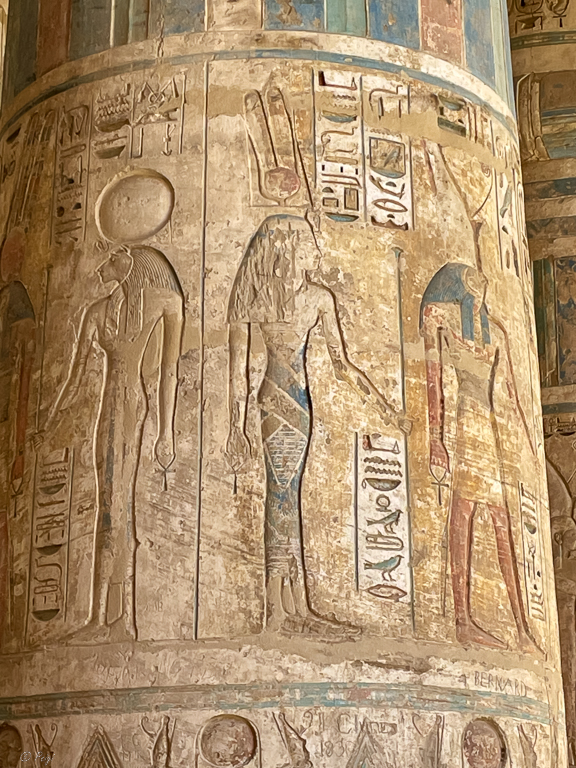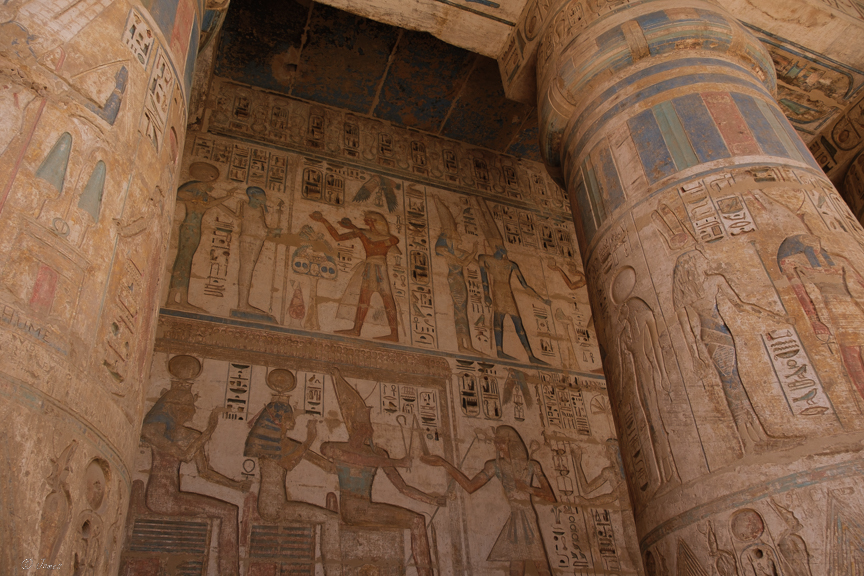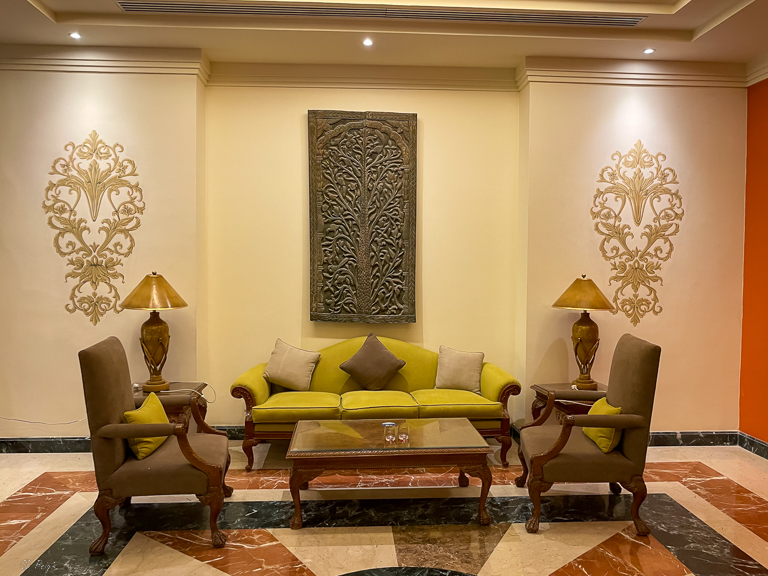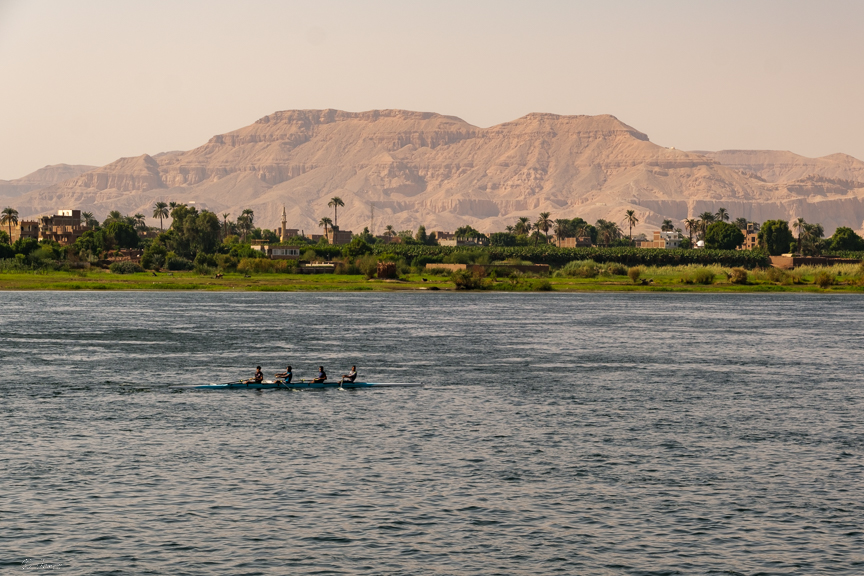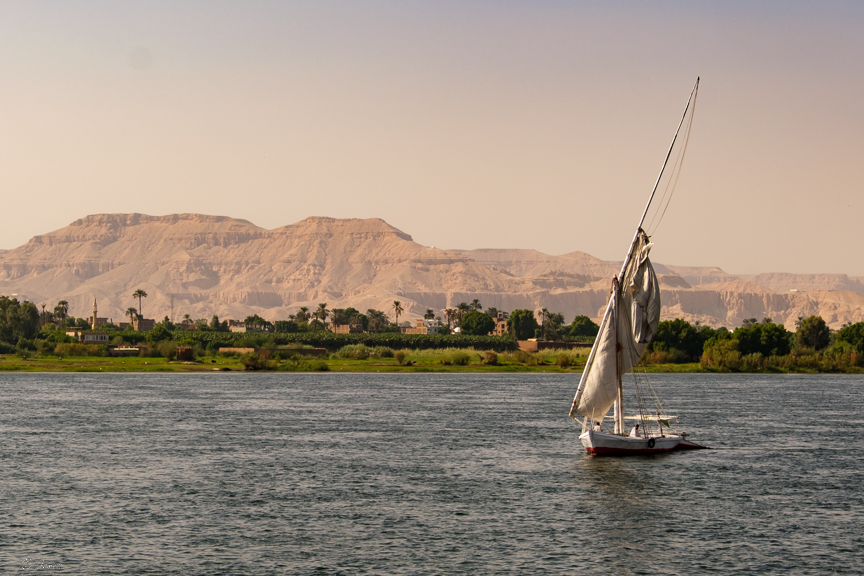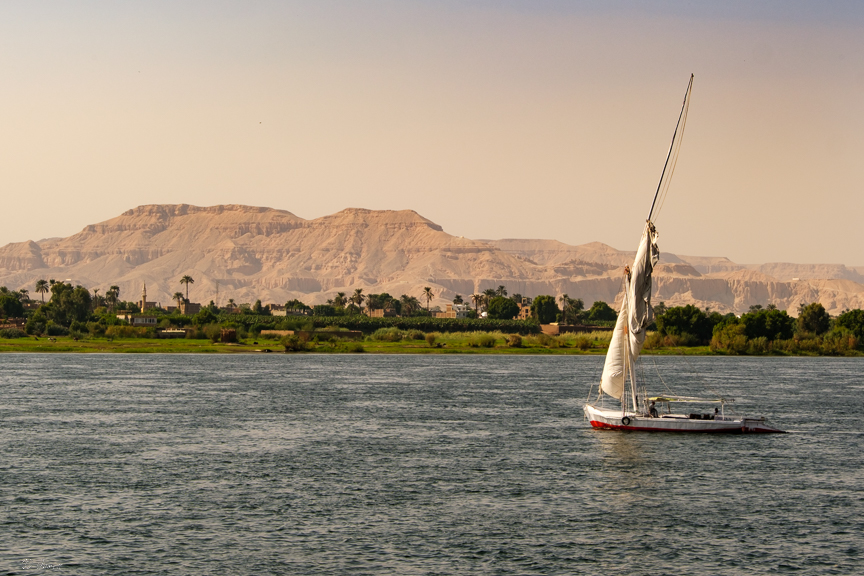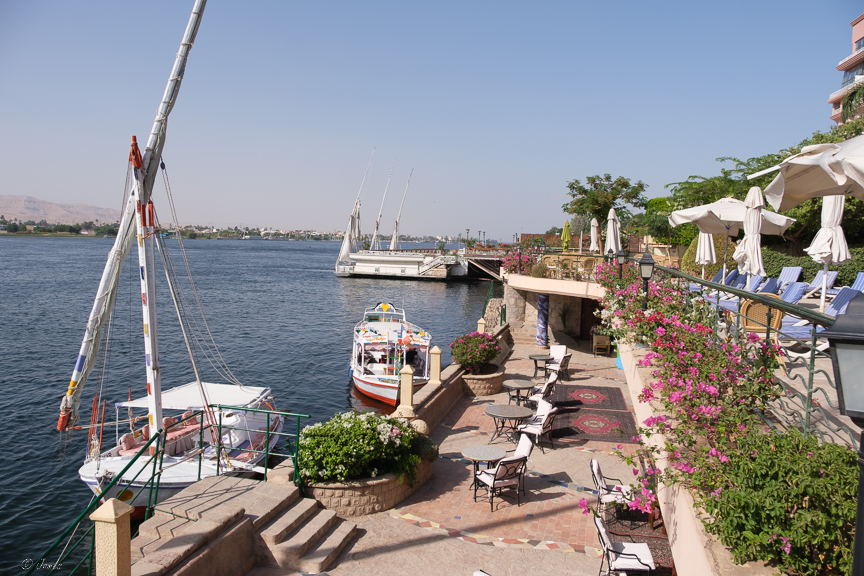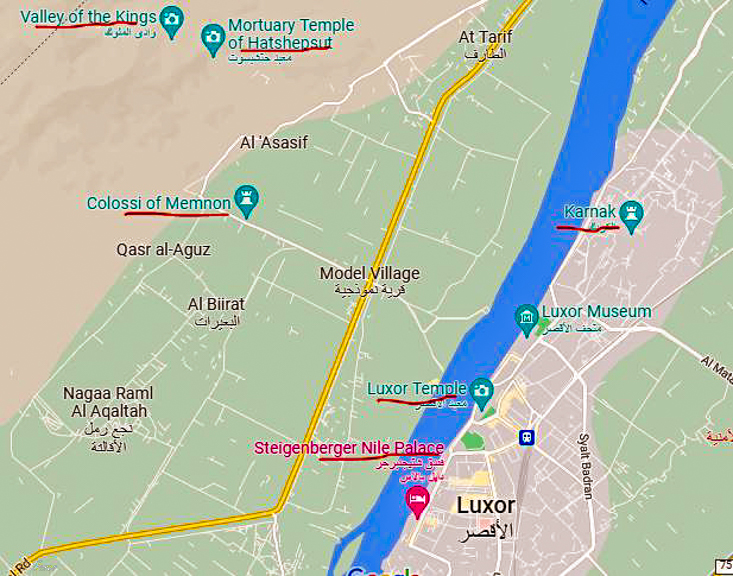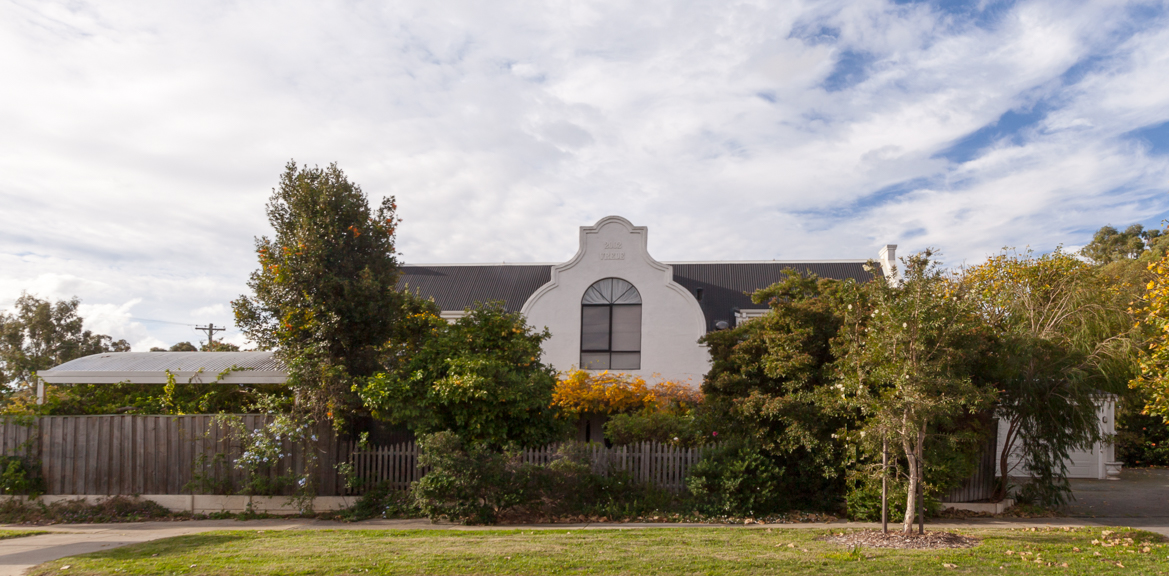I was not looking forward to this day as were up at 3.30am, were given a breakfast pack, and bussed to the airport for the flight south to Luxor. The security at the airport was intense – all bags scanned, shoes and belts off, pat-down, then through passport control (even though we are not leaving the country) and bag weigh, and then the same scanning process again. The flight was at 7am – we were through by 6.30, just enough time to eat some of the breakfast.
Luxor (Thebes) is a much cleaner city, but smaller than Cairo of course. It even has traffic lights! Green fields fill large spaces between smaller buildings, but the river plain is narrow, ending abruptly against the sand and hills to the east and west. Luxor means ‘palace’ due to the many temples.
We were taken directly to our first site, Deir El-Medina on Luxor’s West bank, a village for the workers who built many of Thebes’ amazing sites. They were not slaves, but families, privileged to build for the Pharaoh. The village comprises the remaining walls marking each attached home, some with larger rooms. Prince pointed out how the main path separates them to the east from the burial plots to its west. This is a common theme as the dead are buried on the west bank of Luxor; the East is for the living. The sun rises in the east, bringing new life, and sets in the west bringing darkness. They regarded life as being similar to the daily ritual of sunrise and sunset.
The small Temple of Deir el-Medina (the temple of Hathor) on the northern edge of the village is unique as it was built mainly for the workers. It is also one of the last temples to be surrounded with a mud brick wall that still stands today. The paintings are bright, and different to what we saw later.
Construction of the temple began during the reign of Ptolemy IV Philopator (221–205 BCE) and continued till Ptolemy VIII Euregetes II (170–163; 145–116 BCE).The drawings and hieroglyphs are still very much intact and retain much of their original colours. The most interesting are the papyrus columns, the drawings of Kephri baboons worshiping the sun, and the judgment scene usually reserved for tomb drawings. Also a chess board, a cat and a snake. The complex was later taken over by Copts who turned it into a monastery giving it its modern name, Deir Al-Medina, which means Monastery of the Town.
Medinet Habu and the Temple of Ramses III 1186 – 1069 BC 20th dynasty, was built in the time of the Biblical Judges. It is not very long, 150m. Ramses III reigned 1186-1155 BC. The temple is best known for its new style of engraving, very deep etching. It’s well known for its inscribed reliefs depicting the advent and defeat of the Sea Peoples, possibly the Philistine‘s of scripture. The temple is also noted for the massive columned hall covered in reliefs including eight baboons. So many stories are depicted – pharaoh demanded the hands of the enemy be presented as evidence of the defeated, but this was unreliable so he then required the penis!
The older 18th dynasty temple to Amun or Djéser Set, was built before the Ramses III temple, for the legendary burial of the Ogdoad. Reliefs mention their names and something that sounds like the biblical flood. Originally built by Hatshepsut and Thutmose III, this temple has undergone many alterations over the years.
The many pharaoh names became difficult to place in a date sequence, not helped by the addition of Roman numerals I, II, III… We were provided with the booklet ‘Tour Egypt’ which helped, on which the guides expanded. There are too many sites in this area to see in the limited time, so we concentrated on the 18th dynasty since it is the CMI belief this was the time of the Exile. The important rulers (also mentioned on day 1) are listed in the table of photos ie
- Thutmose I, father of Hatshepsut, mother Ahmose
- Thutmose II, husband of Hatshepsut
- Hatshepsut. Queen of Egypt for many years after the death of Thutmose II. Possibly picked Moses out the Nile.
- Thutmose III. Protégée of Hatshepsut, the Napoleon of Egypt, created the largest empire of all pharaohs, reaching as far as Syria. At the latter end of Thutmose III’s life he may have encountered a rebellious Moses.
- Amenhotep II, son of Thutmose III, may well have been the pharaoh of the Exodus.
- Thutmose IV son of Thutmose III
- Amenhotep III son of Thutmose IV Created the ’Golden City’ (the Rising of Aten) dedicated to Aten. It is currently under excavation (see photo) which has uncovered many artefacts adding to and changing history.
- Amenhotep IV took on a new name Akhenaten, abandoning Luxor-Thebes for a new capital at Tel el Amarna, halfway back to Cairo. He seems to have also become monotheistic.
- Tutankhamun was the great-grandson of Akhenaten.
We were bussed to the very nice Steigenberger Nile Palace, an old hotel in the city, built around a courtyard, with a separate large pool garden area opening onto the Nile. Amazing view across the Nile from the pool to the homes, the green fields, and to the hazy barren hills of Western Luxor beyond, the home of the dead.
